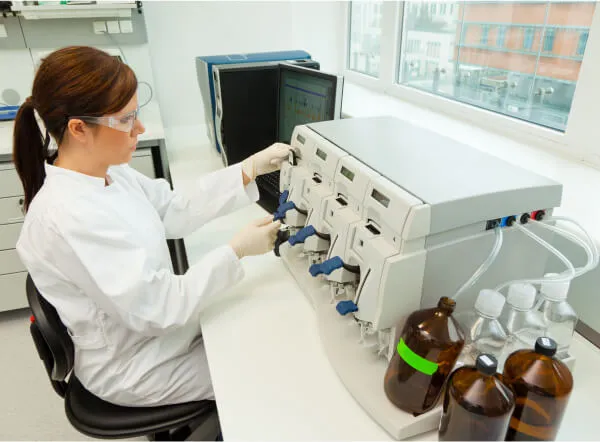Cellular Biology and Anatomy

Cellular biology and anatomy involves the study of cells, including their composition, operation and medical significance. Find out how an interest in these areas can lead to a job in medical science or technology here, along with how much education you'll need to work in a lab or research position.
<h2 id="section---IsCellularBiologyAndAnatomyForMe">Is Cellular Biology and Anatomy for Me?</h2>
<p>Specialists in cellular biology and anatomy investigate types of cells and their structures, as well as how they function at the intracellular and intercellular levels. Areas related to cellular biology and anatomy include biochemistry, developmental biology, genetics and <a class="external" href="https://learn.org/directory/category/Biological_Sciences/Biochemistry,_Molecular_Biology_and_Biophysics/Molecular_Biology.html">molecular biology</a>, all of which are divisions of the <a class="external" href="https://learn.org/articles/What_are_Some_Popular_Biomedical_Careers.html">biomedical</a> sciences.
</p>
<h3 id="section---EmploymentAndSalaryInformation">Employment and Salary Information</h3>
<p>Nationwide, the U.S. Bureau of Labor Statistics (BLS) has projected an average growth in employment for <a class="external" href="https://learn.org/directory/category/Health_Professions_and_Medical_Services/Public_Safety_and_Health/Medical_Scientist.html">medical scientists</a> between 2012 and 2022, at 13%. By comparison, opportunities for <a class="external" href="https://learn.org/articles/Medical_Lab_Technician_Career_Profile_Job_Outlook_and_Training_Requirements.html">medical laboratory technicians</a> were expected to increase by 22%, or much faster than average, from 2012-2022. As of May 2013, medical scientists had an average yearly income of $90,230. In the same month, the average annual salary for medical laboratory technicians was $40,240 (<i>www.bls.gov</i>).
</p>
<h2 id="section---HowCanIWorkInCellularBiologyAndAnatomy">How Can I Work in Cellular Biology and Anatomy?</h2>
<h3 id="section---UndergraduatePrograms">Undergraduate Programs</h3>
<p>An <a class="external" href="https://learn.org/articles/Medical_Laboratory_Technician_Associates_Degree.html">associate's degree in laboratory technology</a> or a <a class="external" href="https://learn.org/articles/Biology_Bachelors_Degree_Programs_Your_Questions_Answered.html">bachelor's degree in biology</a> may qualify you for entry-level work as a laboratory technician or research assistant. As an undergraduate, you'll acquire basic laboratory skills while studying biophysics, biochemistry and genetics, among other general biology subjects. You may also take courses in management, math and statistics. Additional requirements for aspiring lab technicians and technologists can include a professional certification and state-issued license.
</p>
<h3 id="section---GraduatePrograms">Graduate Programs</h3>
<p>An advanced degree is usually required to obtain a job related to cellular biology and anatomy in either the public or private sector. For example, a master's degree in a relevant field of study is the minimum educational requirement for <a class="external" href="https://learn.org/articles/How_Do_I_Become_a_Research_Scientist.html">research scientists</a>; most positions require a Doctor of Philosophy (Ph.D.). Completion of a dual Ph.D. and a Medical Doctor (M.D.) program may be needed to work as a biomedical scientist; several years of research experience might serve as a substitute for some of the educational requirements. Some graduate programs are interdisciplinary in nature, which can allow you to combine your research and laboratory work with studies in neuroscience and reproductive biology, among other subjects.</p>



.svg)